May 27 evening
2020 May 27 evening
Jeff Gaskin writes: Kirsten Mills and I had a pretty good day butterflying by the Kinsol Trestle and in the South Shawnigan lake area today, May 27. At the Kinsol trestle we found 2 Cedar Hairstreaks, 2 Mylitta Crescents, 6 Pale Tiger Swallowtails, 2 Western Tiger Swallowtails, a probable Satyr Comma as there was plenty of stinging nettle about, several Western Spring Azures, and of course Cabbage Whites.
The Stebbings Road, Goldstream Heights was less exciting but still we saw a Propertius Duskywing, a few more Pale Tiger Swallowtails, a Western Tiger Swallowtail, some Western Spring Azures, Cabbage Whites, and Kirsten also saw a Painted Lady.
Today, Ron Flower visited the railway line north of Cowichan Station, where he and Nora saw a Mylitta Crescent and a Painted Lady.

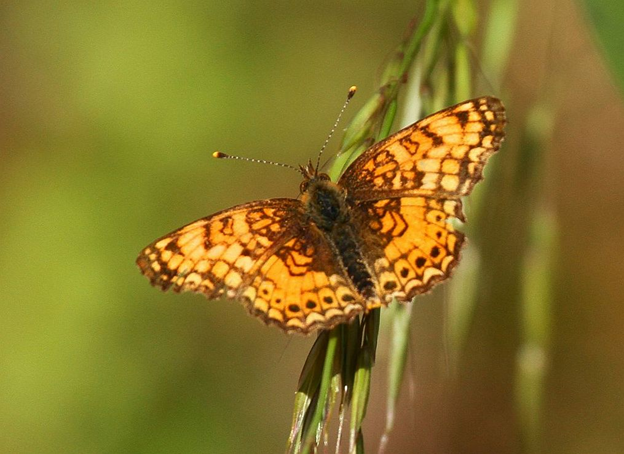
Female Mylitta Crescent Phyciodes mylitta (Lep.: Nymphalidae) Ron Flower

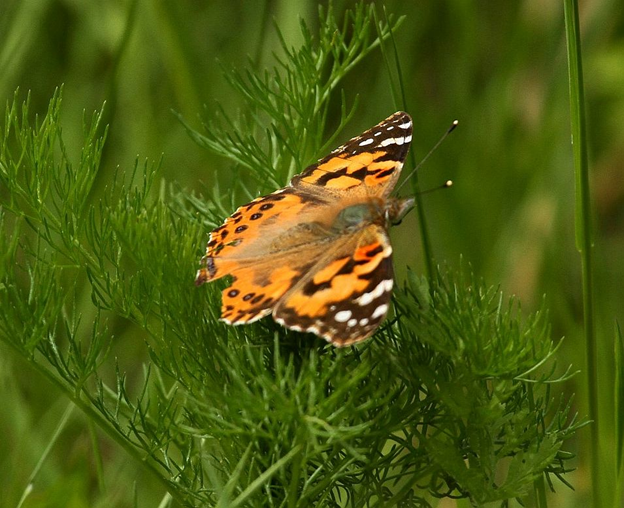
Painted Lady Vanessa cardui (Lep.: Nymphalidae) Ron Flower.
They also saw two identification problems! The first, shown below, is probably, by default, a Satyr Comma, but we would welcome comments! Unfortunately, they were unable to see or photograph the underside. [Since writing this, I heard from Mark Wynja, who says 8 out of 10 for Satyr Comma. I think that’s good enough to label it such. Nettles are abundant there, but not, I think, gooseberries.]

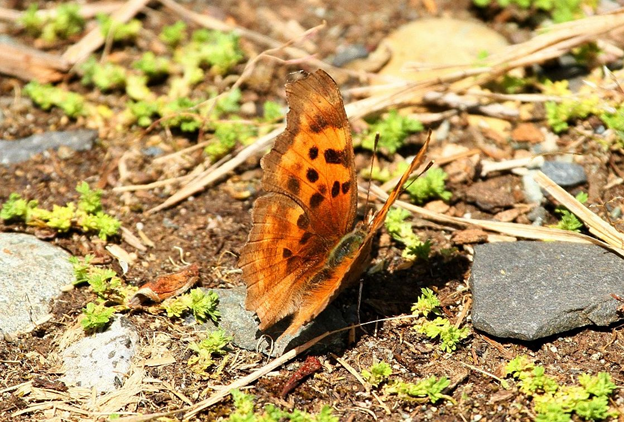
Satyr Comma Polygonia satyrus (Lep.: Nymphalidae) Rob Flower
What about the next one? It is obviously a Parnassian, and we usually assume, by default, that any Parnassian seen not too far from Victoria is a Clodius Parnassian Parnassius clodius.
Note that there are no red spots on the forewing upperside, which is consistent with Parnassius clodius. The Rocky Mountain Parnassian P. smintheus often has red spots on the forewing – but need not necessarily have any. Thus the absence of red spots does not tell us which of the two species it is. The antennae of clodius are supposed to be black, while those of smintheus are chequered black-and-white. What do you think, from the close-up of the antennae? We would welcome comments from viewers who are familiar with these two species. In the meantime, I’ll be cautious and label them Parnassius sp. The foodplants of both species are common there.
Butterflies of the genus Parnassus are best called “parnassians” rather than “apollos”. The name “apollo” should be restricted to the particular parnassian species Parnassus apollo of Europe, and known there as the Apollo butterfly.
Ron and Nora also noted several small blue butterflies there, but were unable to get close enough to identify them. There is a high probability that they are Western Tailed Blues. Further visits to this location might be interesting. They did not see any Margined Whites.
On the way back, Ron and Nora also saw two Silvery Blues on the lupin patch at the corner of Koksilah Road and the Trans-Canada Highway.

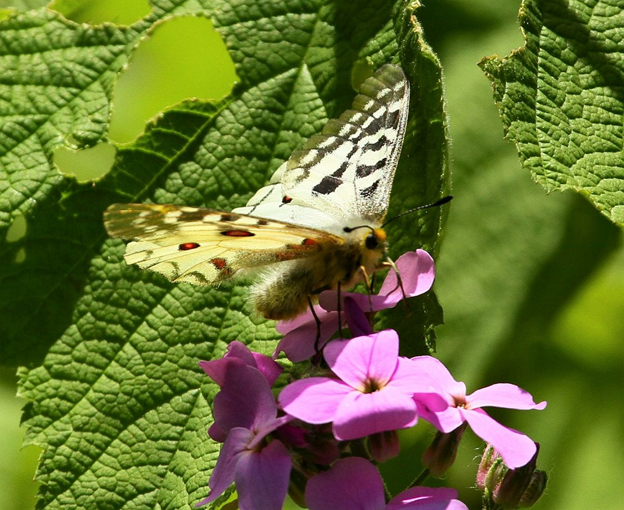
Parnassian Parnassius sp. (Lep.: Papilionidae) Ron Flower

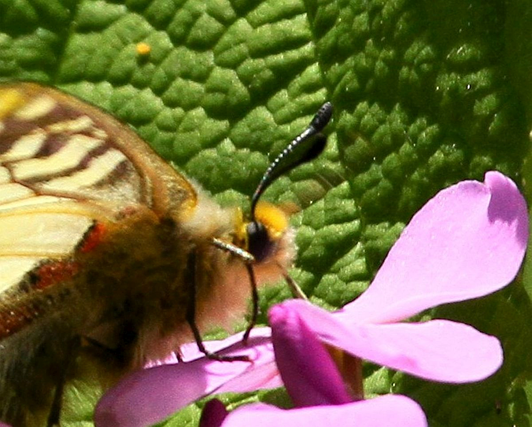
Parnassian Parnassius sp. (Lep.: Papilionidae) Ron Flower
Jeremy Tatum walked along Lochside Drive today, from Lohbrunner’s to Roy, and saw just four Western Spring Azures. He noted quite a few caterpillars of Satyr Comma on the nettles (but no Red Admirals). This looks good as long as Saanich doesn’t cut or spray the verges as they are wont to do. At 6:00 pm this evening, he saw four nymphalids frolicking over the Mount Tolmie reservoir. They were all probably Painted Ladies – two of them certainly were.
Robb Bennett reports that the swallowtail chrysalis shown on May 17 produced an adult butterfly today, and proved to be a Western Tiger Swallowtail. You can see the empty chrysalis case below the butterfly.

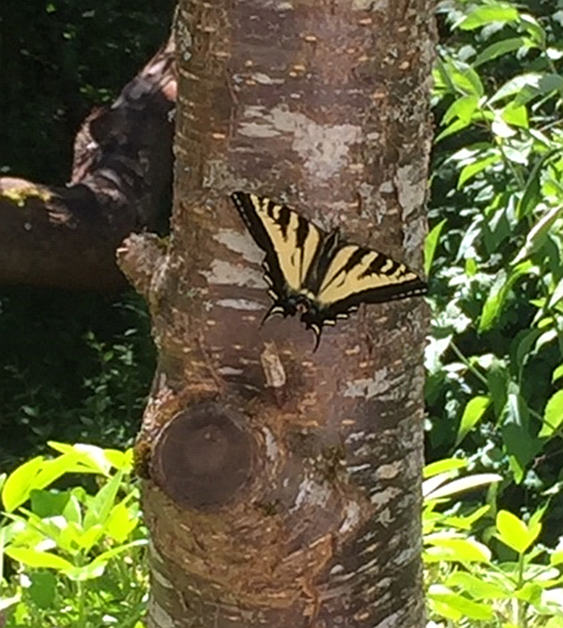
Western Tiger Swallowtail Papilio rutulus (Lep.: Papilionidae) Robb Bennett.
